Calibration execution with bMobile
What is bMobile?
Beamex bMobile is an application for mobile devices, for paperless and guided documentation of calibration activities performed in the field.
- Any instrument created in LOGiCAL for your organization can be synced to bMobile application for calibration.
- Any reference you have created in LOGiCAL for your organization will be available for you when you document your calibrations with bMobile.
See here for more information about bMobile
Download and install bMobile
You can download the Beamex bMobile Calibration Application for free from:
- Apple App Store (iOS)
- Google Play (Android)
- For Windows 10 and Windows 11, bMobile can be found from the downloads section under Help center. Download the application installer to your computer and install it.
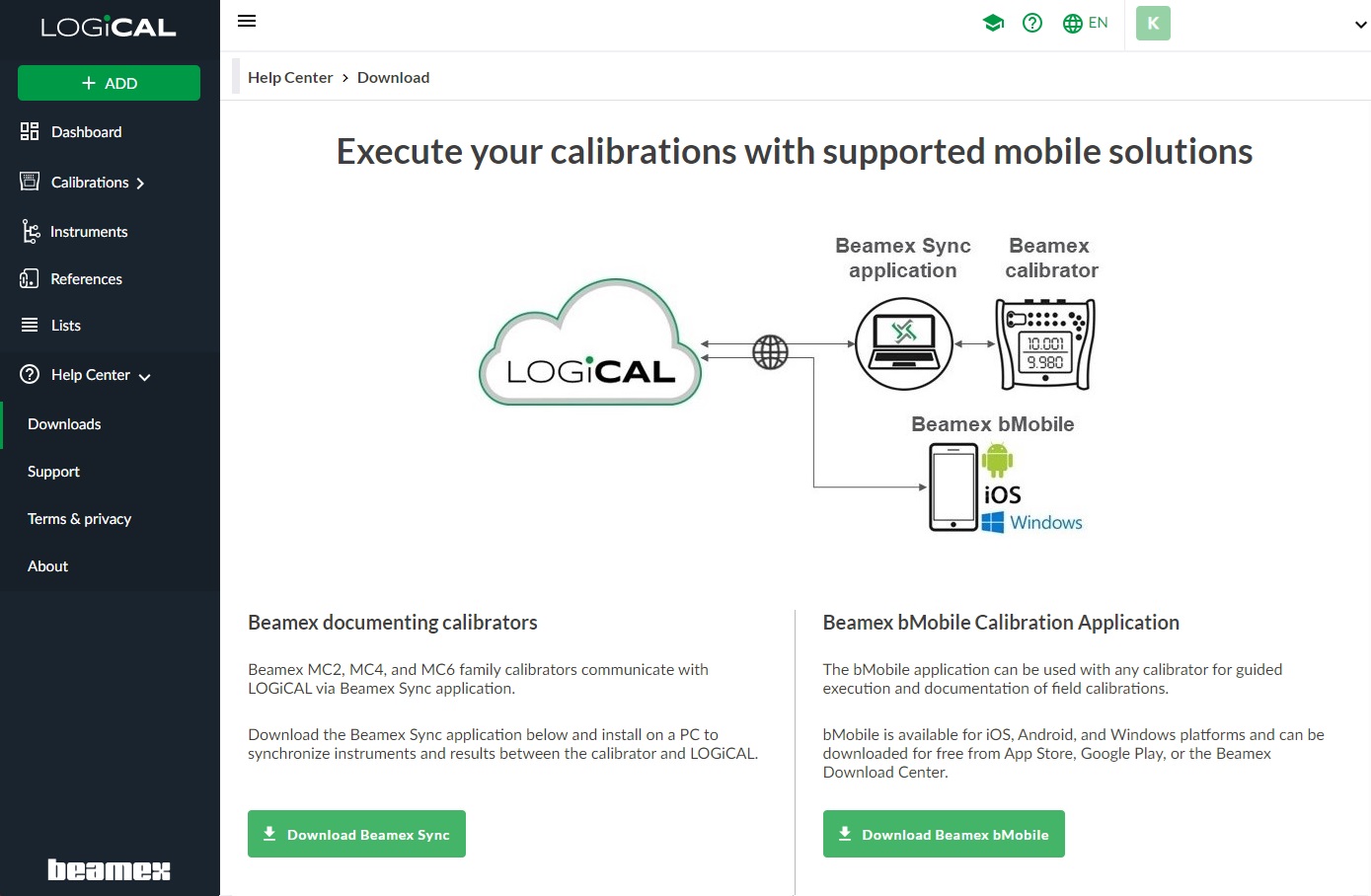
Assign calibration tasks
Instruments due for calibration are assigned for organization's users for calibration execution. This is done through Manage work view, which is used in planning and executing calibration activities. In the view you see the instruments that are due for calibration. The list is ordered based on the due date, with the most urgent (i.e. overdue) on top.
Navigate to the Assign for calibration page for more info about how to assign a calibration task for execution.
Sync calibration task to bMobile
Sign in for the first time
When you start bMobile for the first time, a selection for selecting the communication mode is opened. Select LOGiCAL.
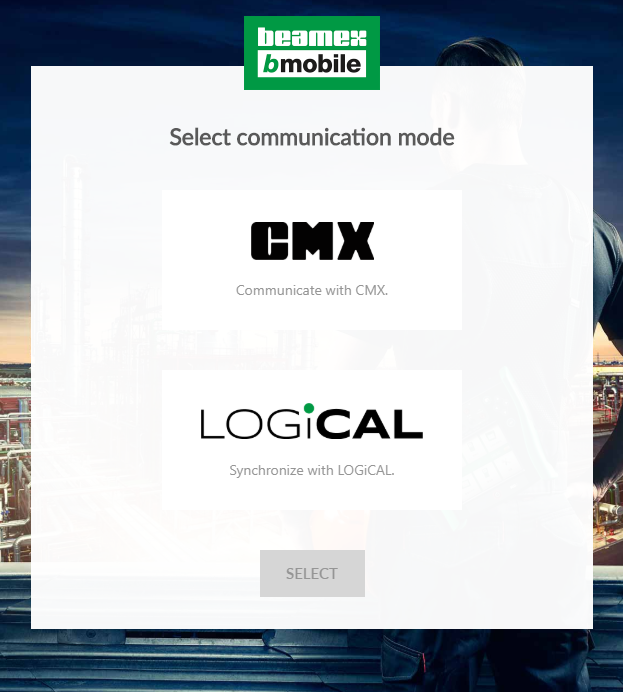
Sign in using your LOGiCAL user name and password:

Note!
To be able to work with bMobile, an internet connection is required when signing in and when syncing instruments or results. After syncing, calibration work can be executed offline.
After signing in, bMobile automatically syncs with LOGiCAL and assigned instruments are transferred to bMobile, along with all references created in LOGiCAL.
Perform calibration
Select instrument for calibration
After syncing, calibration tasks assigned to you will appear in the instrument list view:
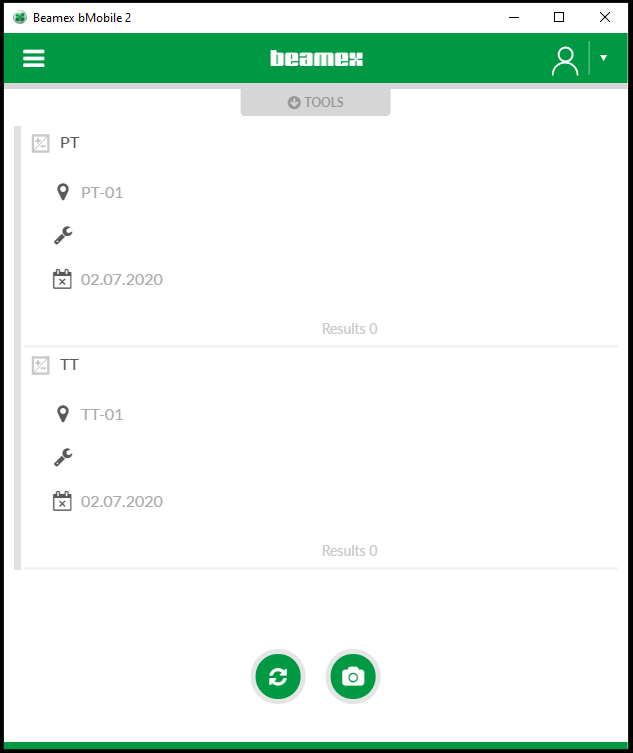
Select an instrument from the list. Following view shows more details of the instrument to be calibrated.
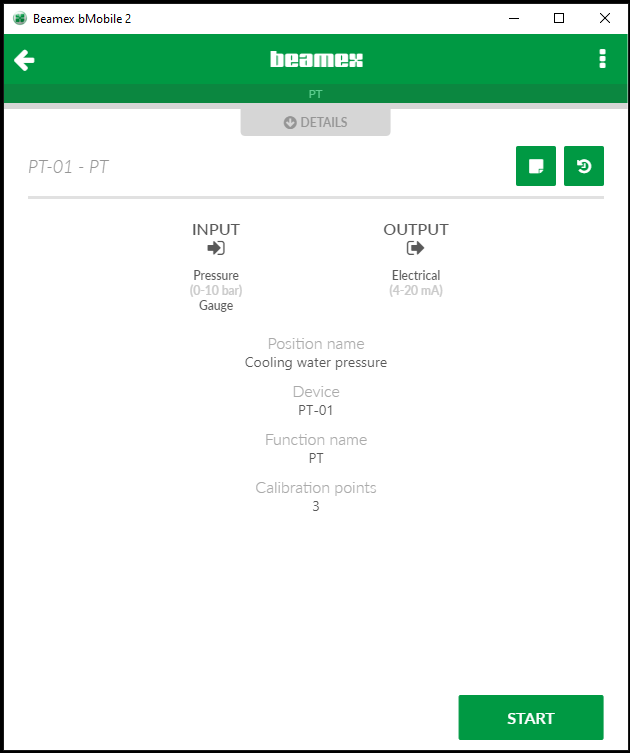
Tap START to begin the calibration execution.
In the calibration view you select the references used as well as calibration points.
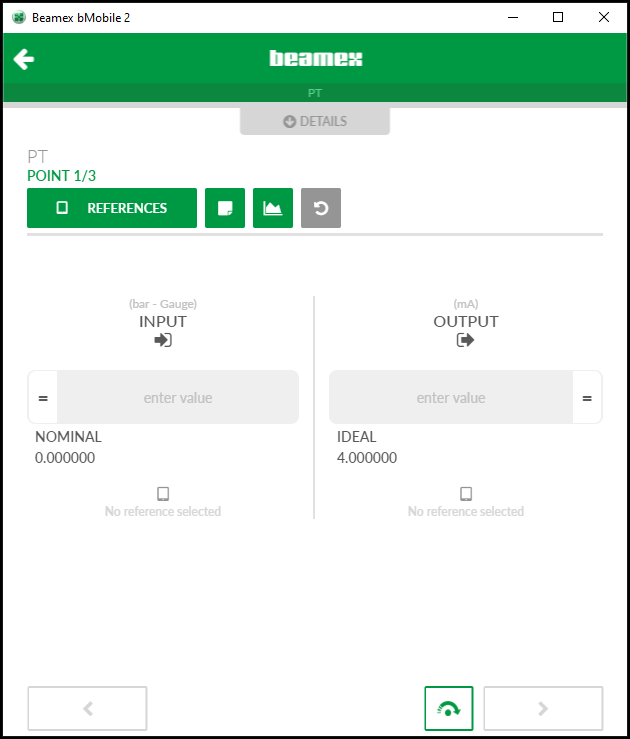
Select references
Tap REFERENCES to select the reference for input and/or output.
Note!
For, e.g. indicators there is no reference, so it is not possible to select a reference for the output.
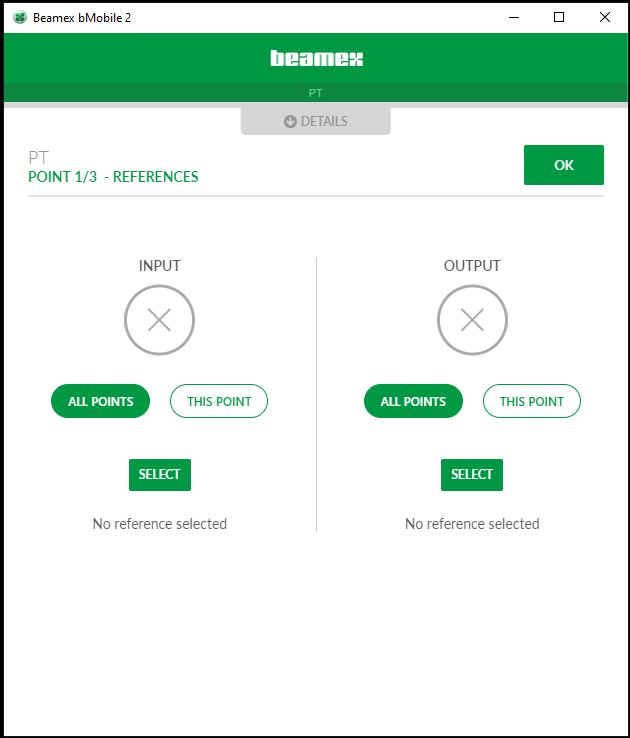
Next you select whether you like to select your reference for all calibration points or just the current calibration point. Once you have chosen this, tap SELECT.
Following view lists all references created into LOGiCAL for your organization. Select one or several references you use for your input or output during calibration. Selected calibrators are listed under "Selected" header. Once you are ready, tap OK.
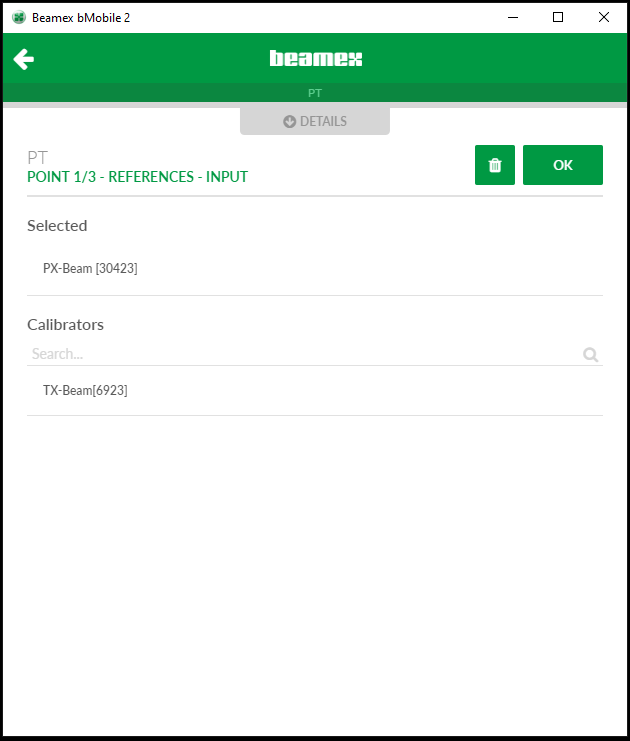
Note!
If the calibration due date has passed for a reference, it is shown in red in the list of references. bMobile warns you if you try to use an overdue calibrator.
Once you have selected your references, they are listed below input and / or output. Tap OK. to return back to the calibration main view.
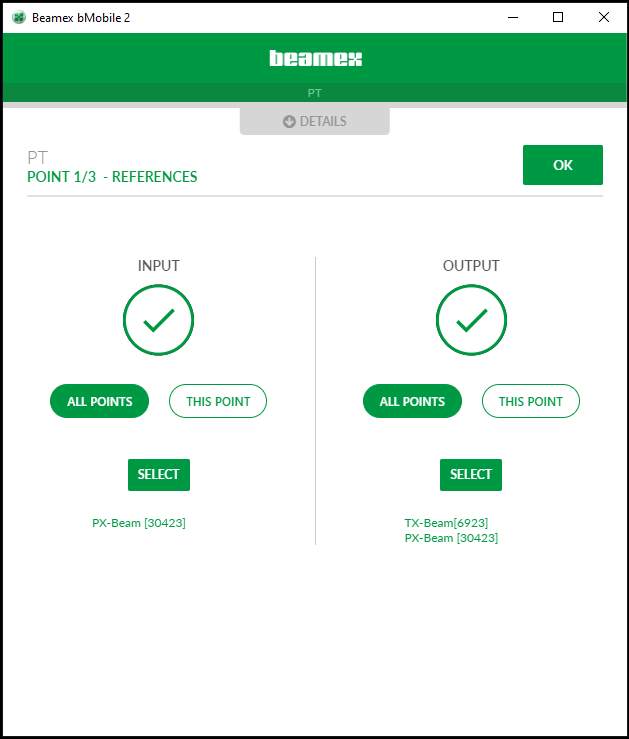
Enter calibration points
Once the references have been defined, enter input and output readings. Then the advance button is activated and you can continue entering the readings of following calibration points.
As the calibration advances, you can see which point you are currently entering results for from the text in the upper part of the window: "POINT 1/3".
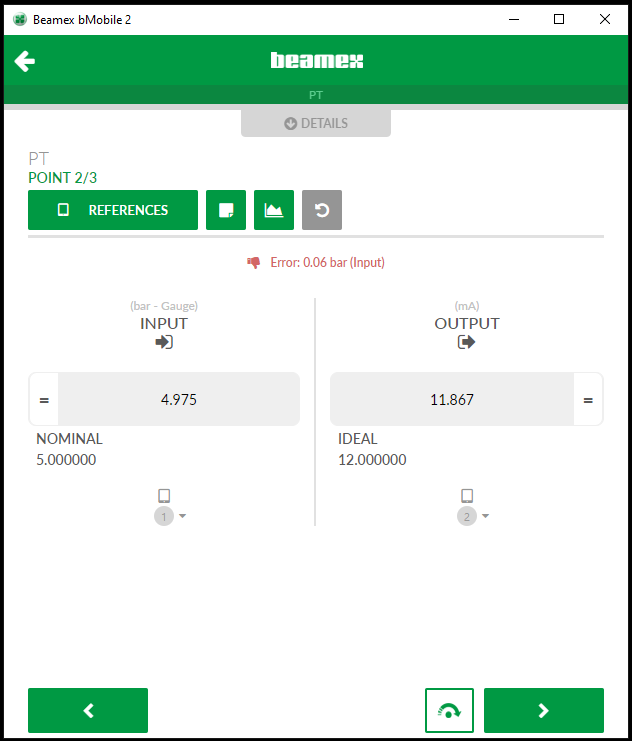
For each calibration point, a note may be given by tapping on the Note icon . The provided note is shown in LOGiCAL's calibration result and in the calibration certificate.
You can toggle the graph view by tapping the graph button:
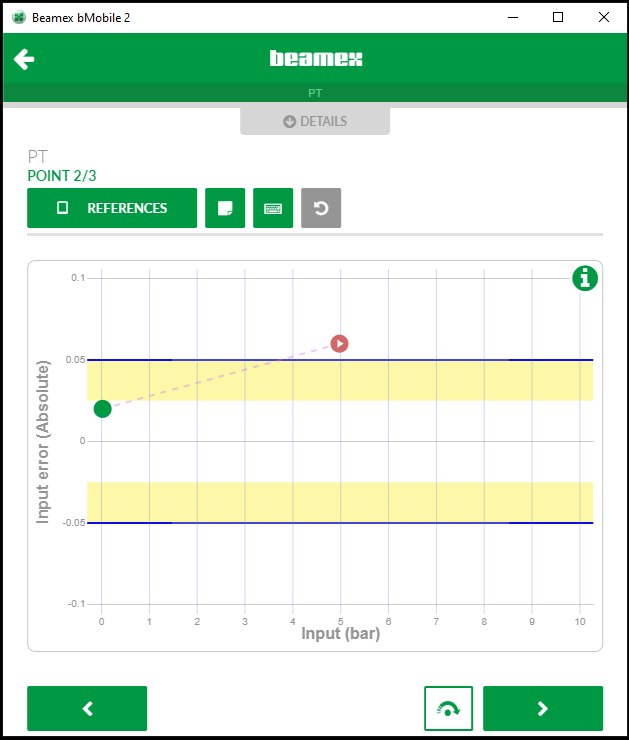
Note!
Tap on a point in graph to see point details. Tap on the info button to see the graph legends.
Save calibration result
Once all calibration points have been documented, an overall result page is shown. You can expand and collapse the menus by tapping on them in the view. Below picture shows the Point details expanded but others are collapsed.
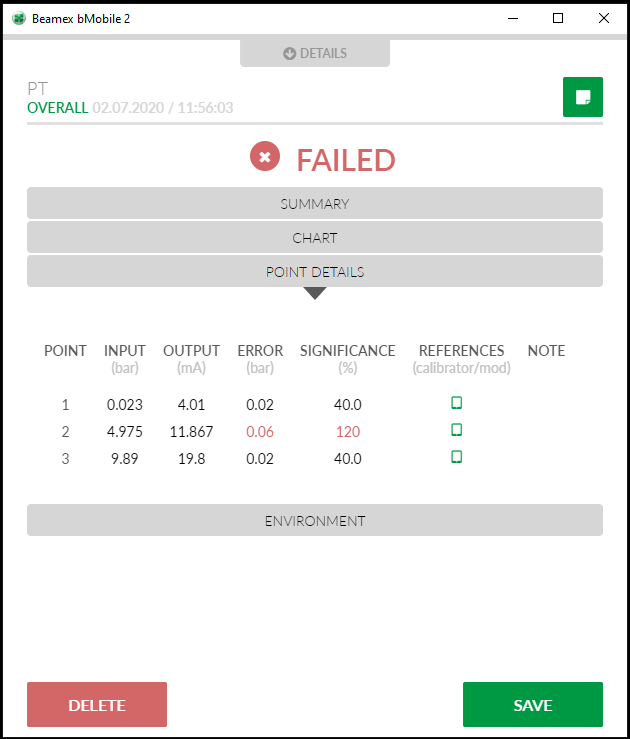
In the top right corner there is a note button. Here you can enter an overall note for the calibration result. Tap the ENVIRONMENT to add Worktime and environmental details during calibration.
Once you are done, tap SAVE
You are provided with the saving options. Choose the Calibration repeat type between as found, as left or as both (copies same data to both as found and as left repeats).
You can change the calibration execution date and time, if you are scribing a result from a paper certificate to LOGiCAL (from a vendor calibration).
Tap SAVE. You are taken to the instruments calibration history view. Tap the arrow on top left corner twice to return to the instrument list view.
Sync calibration result back to LOGiCAL
While you are signed into bMobile, you can sync new work to bMobile or results back to LOGiCAL by tapping the sync button in the Instrument list view.
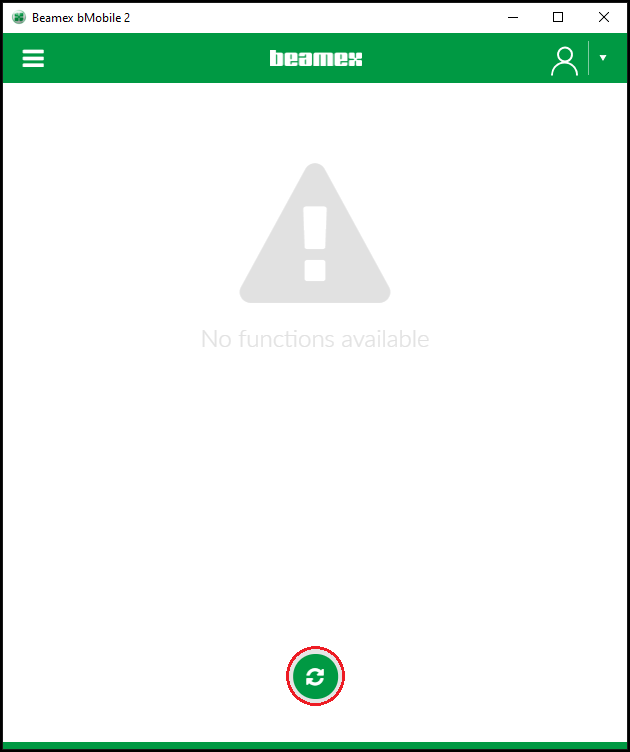
Note!
There is a setting in bMobile to remove results (and instruments) automatically from the device when syncing. See bMobile settings
See here for more information about using bMobile.